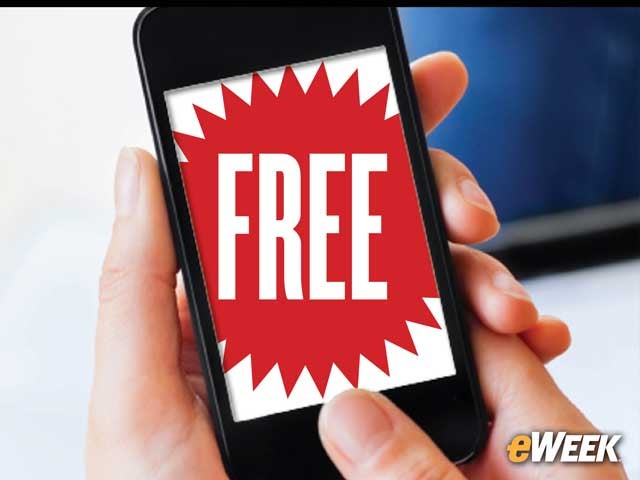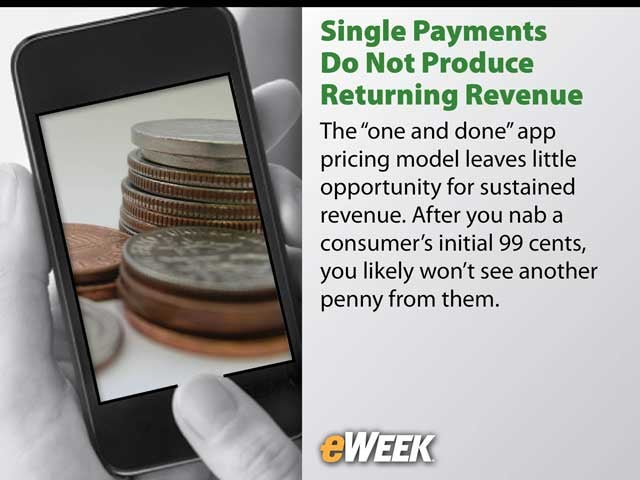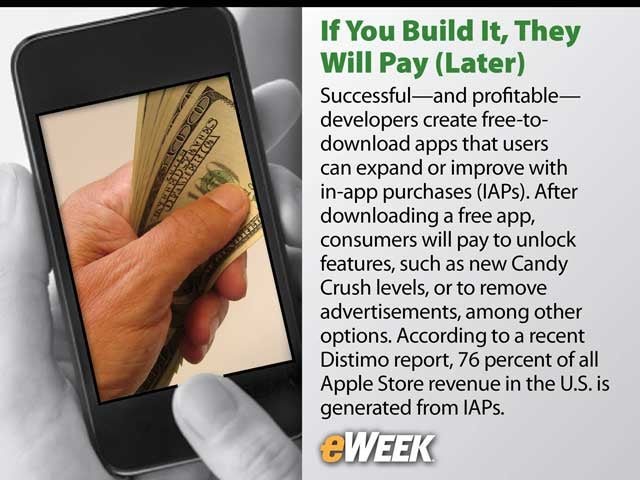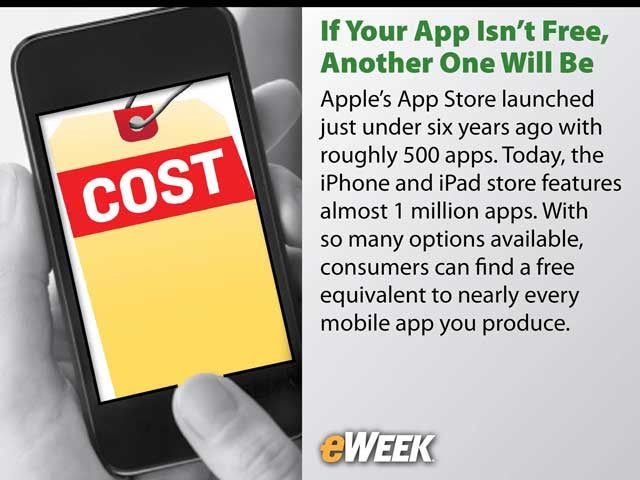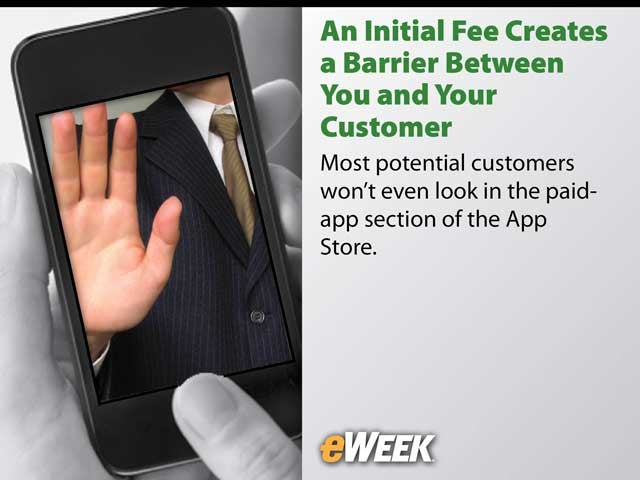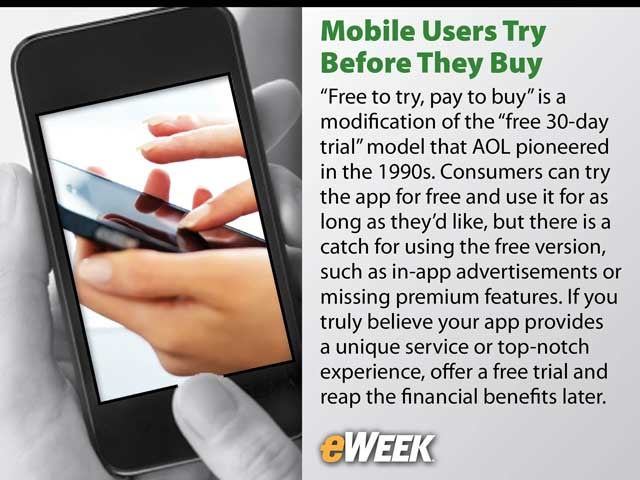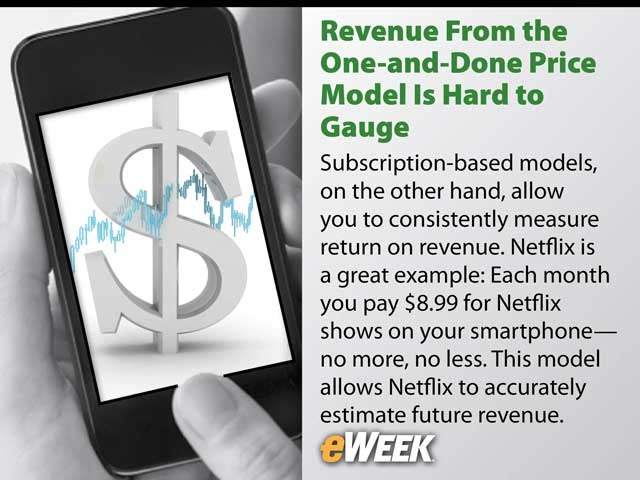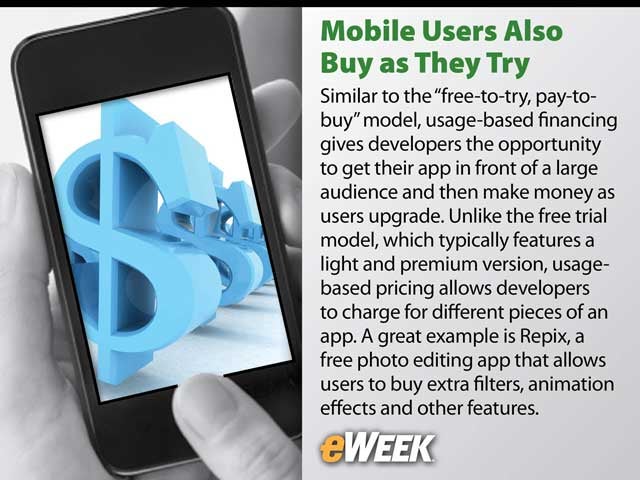eWEEK content and product recommendations are editorially independent. We may make money when you click on links to our partners. Learn More.
2Single Payments Do Not Produce Returning Revenue
3If You Build It, They Will Pay (Later)
Successful—and profitable—developers create free-to-download apps that users can expand or improve with in-app purchases (IAPs). After downloading a free app, consumers will pay to unlock features, such as new Candy Crush levels, or to remove advertisements, among other options. According to a recent Distimo report, 76 percent of all Apple Store revenue in the U.S. is generated from IAPs.
4If Your App Isn’t Free, Another One Will Be
5An Initial Fee Creates a Barrier Between You and Your Customer
6Paid Apps Give Too Much Away
7Mobile Users Try Before They Buy
“Free to try, pay to buy” is a modification of the “free 30-day trial” model that AOL pioneered in the 1990s. Consumers can try the app for free and use it for as long as they’d like, but there is a catch for using the free version, such as in-app advertisements or missing premium features. If you truly believe your app provides a unique service or top-notch experience, offer a free trial and reap the financial benefits later.
8Revenue From the One-and-Done Price Model Is Hard to Gauge
9Value-Based Revenue Is Even Harder to Gauge
10Mobile Users Also Buy as They Try
Similar to the “free-to-try, pay-to-buy” model, usage-based financing gives developers the opportunity to get their app in front of a large audience and then make money as users upgrade. Unlike the free trial model, which typically features a light and premium version, usage-based pricing allows developers to charge for different pieces of an app. A great example is Repix, a free photo editing app that allows users to buy extra filters, animation effects and other features.
11Free Apps Simply Reach More People
According to App Annie’s recent list of the top grossing iPhone apps in the U.S., nine out of 100 apps exist as purely paid apps. Thus, 91 of the top 100 apps are free to download and generate revenue through other venues.
